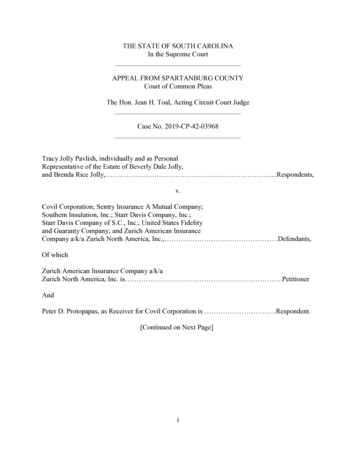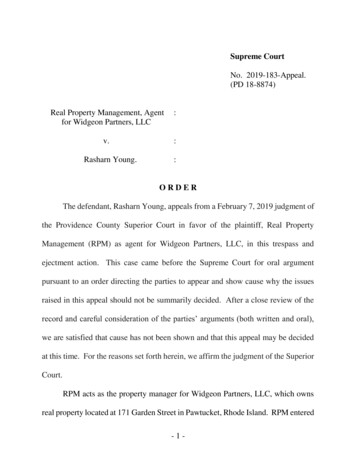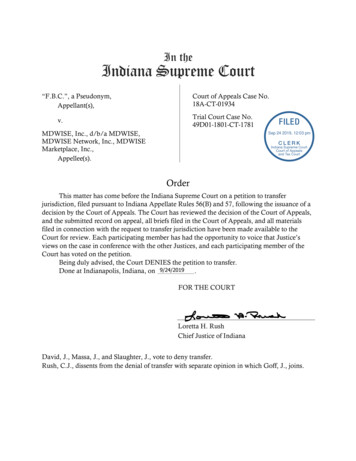
Transcription
In theIndiana Supreme Court“F.B.C.”, a Pseudonym,Appellant(s),Court of Appeals Case No.18A-CT-01934Trial Court Case No.49D01-1801-CT-1781v.MDWISE, Inc., d/b/a MDWISE,MDWISE Network, Inc., MDWISEMarketplace, Inc.,Appellee(s).FILEDSep 24 2019, 12:03 pmCLERKIndiana Supreme CourtCourt of Appealsand Tax CourtOrderThis matter has come before the Indiana Supreme Court on a petition to transferjurisdiction, filed pursuant to Indiana Appellate Rules 56(B) and 57, following the issuance of adecision by the Court of Appeals. The Court has reviewed the decision of the Court of Appeals,and the submitted record on appeal, all briefs filed in the Court of Appeals, and all materialsfiled in connection with the request to transfer jurisdiction have been made available to theCourt for review. Each participating member has had the opportunity to voice that Justice’sviews on the case in conference with the other Justices, and each participating member of theCourt has voted on the petition.Being duly advised, the Court DENIES the petition to transfer.9/24/2019Done at Indianapolis, Indiana, on.FOR THE COURTLoretta H. RushChief Justice of IndianaDavid, J., Massa, J., and Slaughter, J., vote to deny transfer.Rush, C.J., dissents from the denial of transfer with separate opinion in which Goff, J., joins.
Rush, Chief Justice, dissenting.Today, this Court passes up an important opportunity—to clear upuncertainty and declare that Indiana recognizes a claim of publicdisclosure of private facts. Because our guidance on this issue is necessary,I respectfully dissent from the denial of transfer.Public disclosure of private facts is a distinct wrong that falls under thebroad tort of invasion of privacy. Restatement (Second) of Torts § 652Acmt. b (Am. Law Inst. 1977). According to the Restatement, a person issubject to liability for the sub-tort of public disclosure if the person gives“publicity” to a matter that concerns the private life of another, that wouldbe highly offensive to a reasonable person, and that is not of legitimatepublic concern. Id. § 652D. For purposes of this rule, “publicity” meanscommunication “that reaches, or is sure to reach, the public,” but notcommunication “to a single person or even to a small group of persons.”Id. § 652D cmt. a.This Court discussed the Restatement’s definition of public disclosureof private facts in Doe v. Methodist Hospital, 690 N.E.2d 681 (Ind. 1997)(plurality opinion). There, Doe sued his co-worker for invasion of privacyafter the co-worker disclosed to two fellow employees that Doe testedpositive for HIV. Id. at 683. In a plurality opinion, this Court affirmedsummary judgment for Doe’s co-worker, concluding that “[t]he facts andthe complaint in this particular case do not persuade us to endorse thesub-tort of disclosure.” Id. at 693.In a separate opinion, then-Justice Dickson agreed with the result—given that Doe failed to show “publicity”—but disagreed that the sub-tortof public disclosure wasn’t cognizable. Id. (Dickson, J., concurring inresult). Rather, his separate opinion maintained that public disclosure ofprivate facts was already established under Indiana common law; that thestate constitution supported recognition of disclosure claims; and thatsignificant policy concerns counseled against abrogating the sub-tort. Id. at693–95.
Fast forward a few years to Felsher v. University of Evansville, 755 N.E.2d589 (Ind. 2001). That case did not involve the sub-tort of public disclosurebut, rather, another distinct wrong under the umbrella of invasion ofprivacy—appropriation of name or likeness. Id. at 593. Before analyzingthe appropriation claim, this Court briefly brought up Doe andcharacterized that plurality opinion as a “decision not to recognize abranch of the [invasion of privacy] tort involving public disclosure ofprivate facts.” Id. (citing 690 N.E.2d at 682, 693). Felsher’s pronouncementon the sub-tort arguably closed the door to disclosure claims in Indiana.But less than three months later, this Court cast doubt on Felsher’sseemingly decisive statement that the sub-tort of public disclosure was notcognizable. In Allstate, this Court said that “[t]he extent to which the tortof invasion of privacy is recognized in Indiana is not yet settled.” AllstateIns. Co. v. Dana Corp., 759 N.E.2d 1049, 1056–57 (Ind. 2001). In making thatstatement, the Court described Doe as a “disagreement whether torecognize a claim for ‘public disclosure of private facts.’” Id. at 1057 (citing690 N.E.2d 681). Notably missing from Allstate’s invasion-of-privacydiscussion was any mention of Felsher.After this trilogy of opinions—Doe, Felsher, and Allstate—courts havereasonably adopted disparate, and sometimes ambivalent, positions onwhether the sub-tort of public disclosure of private facts exists in Indiana.See Robbins v. Trs. of Ind. Univ., 45 N.E.3d 1, 7 n.1 (Ind. Ct. App. 2015)(finding “some support” for the view that “invasion of privacy by publicdisclosure of private facts is not a valid cause of action in Indiana”); id. at13 (Crone, J., concurring in part and concurring in result in part)(“Whether Indiana recognizes this tort is technically an open question, butfor all practical purposes the answer is currently no.”); J.H. v. St. VincentHosp. & Health Care Ctr., Inc., 19 N.E.3d 811, 815–16 (Ind. Ct. App. 2014)(analyzing the merits of the plaintiff’s public-disclosure claim and thusimplicitly recognizing the claim’s cognizability); Westminster PresbyterianChurch of Muncie v. Younghong Cheng, 992 N.E.2d 859, 868 (Ind. Ct. App.2013) (maintaining that “public disclosure of private facts is not arecognized cause of action in Indiana”), trans. denied; see also Brown v.Wabash Nat. Corp., 293 F. Supp. 2d 903, 905 (N.D. Ind. 2003) (“Evenassuming Indiana courts recognize such a claim for public disclosure ofIndiana Supreme Court Case No. 18A-CT-1934 September 24, 2019Page 2 of 4
private facts based on the facts presented in this matter, Plaintiff’sallegations . . . cannot meet the threshold necessary to state a claim for tortof invasion of privacy based on public disclosure of private facts.”).This recent history of public-disclosure decisions serves as a backdropto the current controversy, which unsurprisingly generated a split opinionbelow. See F.B.C. v. MDwise, Inc., 122 N.E.3d 834 (Ind. Ct. App. 2019).Here, a wife asserted a claim for public disclosure of private facts againstan insurance company after her husband logged onto the company’s webportal and discovered that she had been tested for a number of sexuallytransmitted diseases. Id. at 836. A majority of the panel found the wife’spublic-disclosure claim precluded by Doe and Felsher, reasoning that theparticular sub-tort “has not yet been recognized in Indiana.” Id. JudgeBailey dissented, opining that the “ubiquity of digital data” and theresultant ability “for unwanted third parties to obtain—and share—sensitive information” would compel this Court to recognize the publicdisclosure claim. Id. at 839 (Bailey, J., dissenting). The dissent furtheropined that this Court would adopt a looser definition of “publicity,” sothat disclosures not made to the general public—but made to a “particularpublic” with a special relationship to the plaintiff—could still beactionable. Id.I agree, in part, with Judge Bailey. The sub-tort of public disclosure ofprivate facts is a “valuable source of deterrence and accountability”because of “the growing technological opportunities for invasive scrutinyinto others’ lives.” Doe, 690 N.E.2d at 695 (Dickson, J., concurring inresult). And as Doe’s separate opinion convincingly maintained, the subtort is already established in our jurisprudence. Id. at 694 (asserting that“[f]or almost half a century, Indiana courts have clearly recognized thecommon law tort of invasion of privacy, including the unwarranted publicdisclosure of private matters” and citing cases in support). That beingsaid, I would adhere to the Restatement’s narrower definition of“publicity” and not recognize claims of disclosure to a “particular public.”In other words, I would affirm dismissal of F.B.C.’s disclosure, but notfor the reason the Court of Appeals majority advances. Rather, I’d holdthat although Indiana recognizes a sub-tort of public disclosure of privateIndiana Supreme Court Case No. 18A-CT-1934 September 24, 2019Page 3 of 4
facts, F.B.C. failed to allege the requisite “publicity” to allow herdisclosure claim to proceed, given that her medical tests were notcommunicated “to the public at large, or to so many persons that thematter must be regarded as substantially certain to become one of publicknowledge,” Restatement (Second) of Torts § 652D cmt. a.In sum, while I would likewise affirm the trial court’s dismissal ofF.B.C.’s public-disclosure claim, I would grant transfer to dispel anyconfusion surrounding the sub-tort. The sub-tort of public disclosure ofprivate facts is cognizable, and we should say so.Goff, J., joins.Indiana Supreme Court Case No. 18A-CT-1934 September 24, 2019Page 4 of 4
Loretta H. Rush Chief Justice of Indiana David, J., Massa, J., and Slaughter, J., vote to deny transfer. . Allstate, this Court said that “[t]he extent to which the tort . with Judge Bailey. The sub-tort of public disclosure of private fact
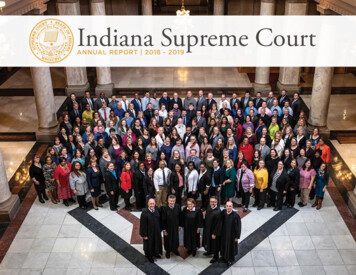
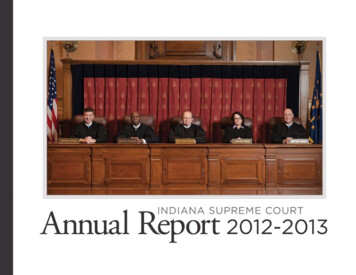

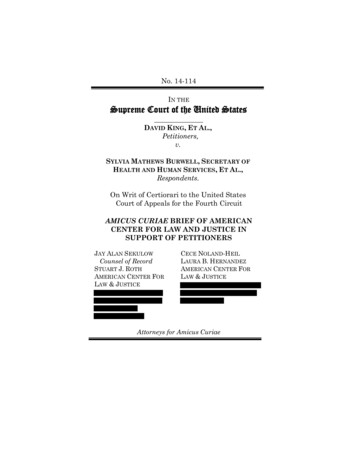
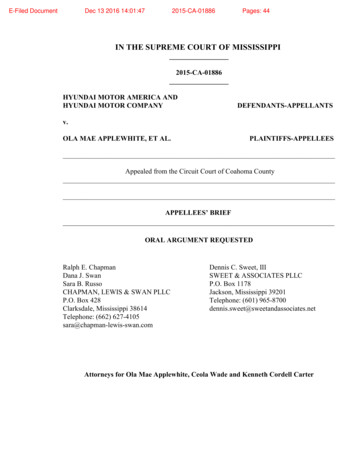
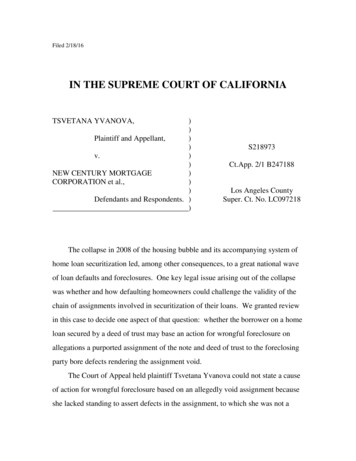
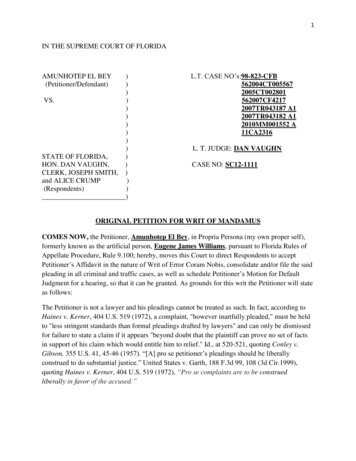
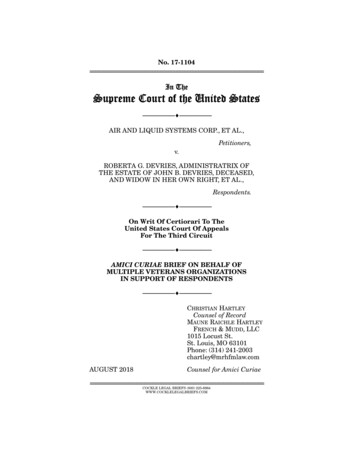
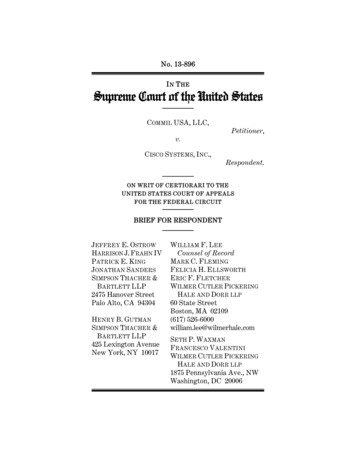
![IN THE SUPREME COURT OF T]-lE STATE OF MONTANA](/img/7/526b198c923f8.jpg)
